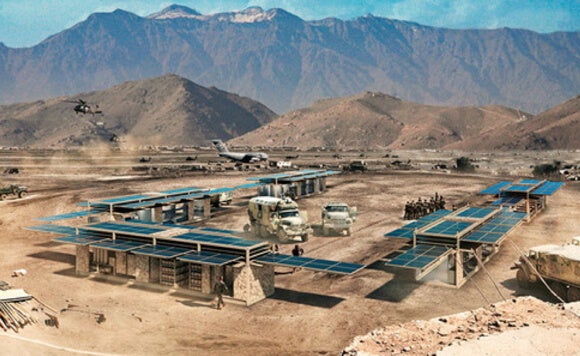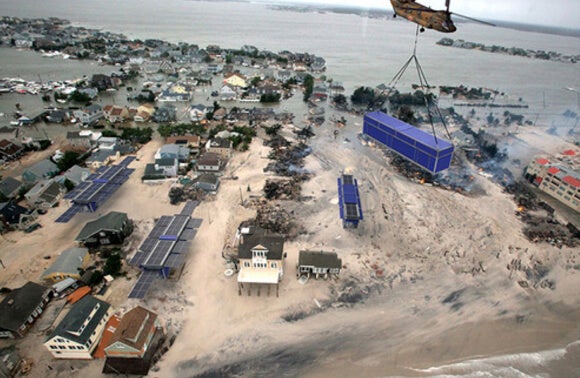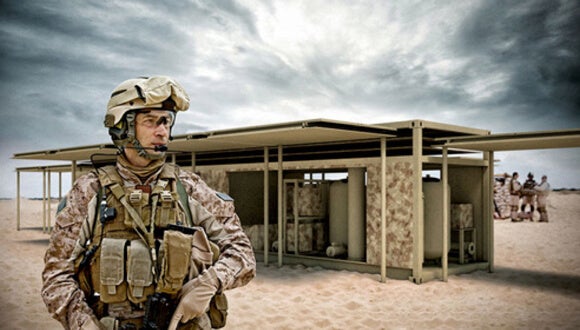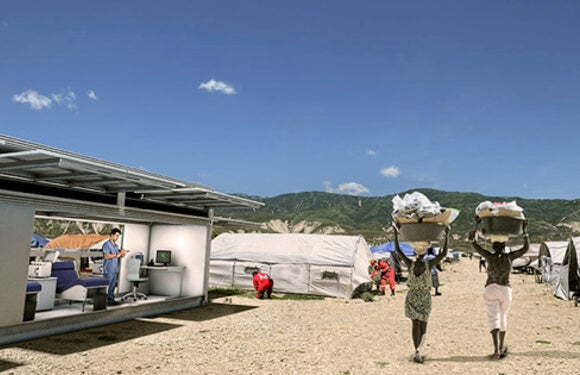Following a major disaster, water, energy, and communications can be in short supply—challenging for residents and relief workers alike. But what if you could provide these necessities using only sunlight? Ecosphere‘s all-in-one solar solution, the Ecos PowerCube, can provide energy, water, satellite communications, and WiFi.
Initially, the PowerCube looks little more than a standard shipping container (10-feet, 20-feet, or 40-feet long). But once in place, the container rolls out an array of solar panels on hydraulic shelves—the increased usable surface area produces 400% more power.
The PowerCube provides an internet connection up to 30 miles away. It can clean water without a source by pulling moisture from the air. The unit provides shelter in a pinch. And of course, its solar panels soak up enough sunlight to generate 15 kW of energy for its core functions, emergency hospitals, sleeping quarters, or command centers.
PowerCube is an interesting concept, but how does it compare to traditional solutions?
If the emergency is weather related, solar power might not be an abundant resource as the tatters of the storm swirl above right after the disaster. Further, 15 kW is only a bit more than a rooftop solar installation, and after other functions, there won’t likely be a full 15 kW of juice available for external power provision at any given time.
A traditional diesel generator, on the other hand, puts out between 600 kW and 1.7 MW of power—at least 40 times more than the PowerCube—day and night, independent of weather. Of course, generators need fuel, but if you’re able to drop off a shipping-container-sized solar plant, you can probably bring along some diesel too.
Although diesel isn’t as clean or safe as solar, it might be more practical for short-term uses in disaster relief. That is, why not hook up the other functions (satellite, WiFi, and water) to a traditional generator? The total footprint would be smaller, and significant extra power could be used to keep local facilities electrified.
Ecosphere suggests their unit might go beyond emergency relief, however, for use in humanitarian settings in developing countries or in the military. No doubt silent power generation would suit covert military operations, but lack of traditional generator levels of power and storage could be a drawback in other uses.
PowerCube might well be a great solution for humanitarian settings in poor, rural communities. But would it be sustainable? We’re reminded of a recent conversation we had with UNICEF in which representatives noted the problem of the “magic box”—a piece of technology that’s ultimately too complicated for its own good. After normal wear and tear, the technology breaks, no one can fix it, and the thing is left to gently rust away.
The PowerCube is a cool, if imperfect all-in-one solution. Only experience in the field will determine its efficacy. It might prove very useful in combination with traditional methods. And the two technologies key to PowerCube’s success—batteries and solar cells—ought to improve in the coming years (faster for solar, a little slower for batteries).
Image Credit: Ecosphere







